22 Jan Namanari,an article
NAMANARI or the Power of Jealousy
I am a betrayed woman
I nurture resentment
I feed on grief.
Jealousy changes me
into the demon of revenge
with sharp fangs and diabolical horns.
Then I step onto the stage and consume my obsession
I exit the scene, take off my mask
and leave Namanari alive
but exiled to the fringes of the mind.
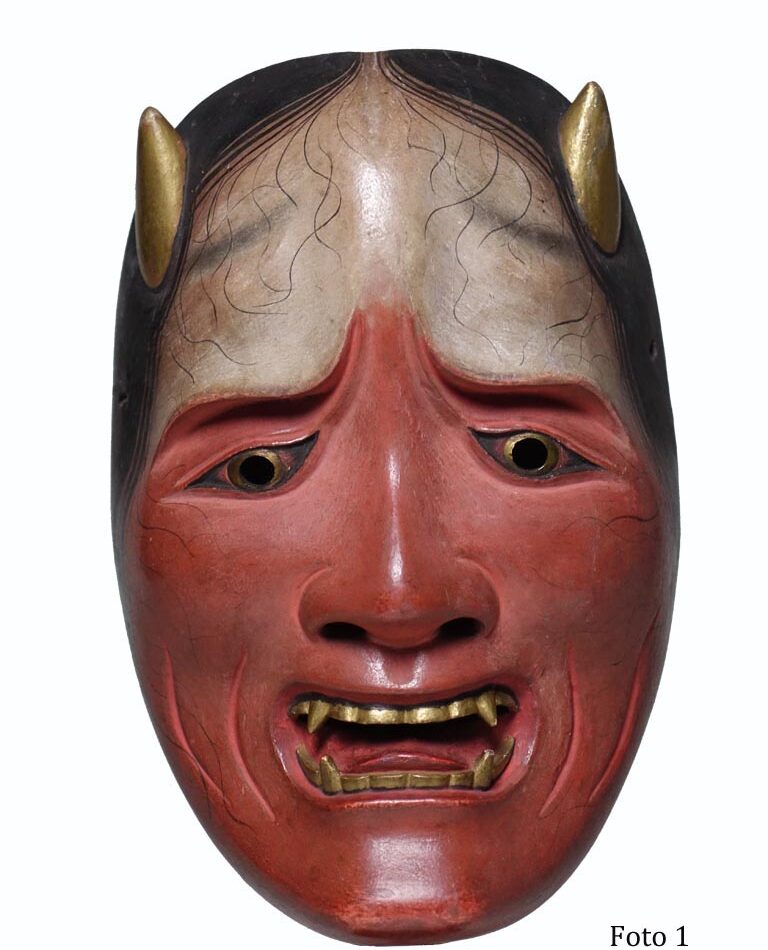
If any of my friends knew that I decided to publish on my website the mask of a woman who is turning into a terrible demon they might believe I am mad or at least a reckless eccentric.
Indeed, who could feel attracted by such a character, brimming with ill feelings?
I do, and I will explain why.
Namanari (photo 1) is the portrait of an abandoned woman whom jealousy is turning into a revenge-seeking demon. The transformation is not accomplished yet: this happens in a second mask of Namanari (photo 2) and is fully achieved in a third mask, that of Hannya (photo 3).
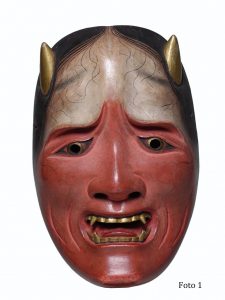
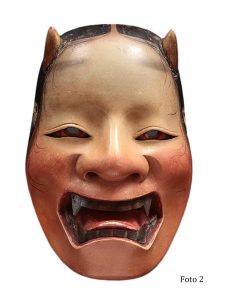
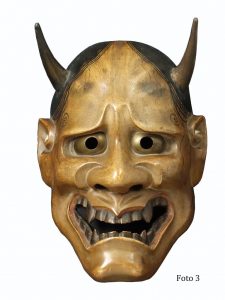
But Namanari already senses the first signs of change: the face is still human, but she feels lost because she can see the transformation taking place. Her forehead contracts in a deep furrow of fear and the straining eyes, as if looking into a mirror, try to bring into focus a face which is no longer hers: the mouth opens to show the growing canine teeth and small but devilish horns jut out of her forehead. The dramatic expression is enhanced by the contrast between the white forehead and the red face.
But this is also a moment of mental change: her agony becomes obsession and the obsession turns into ravings. Namanari is conscious that she is losing her mind, but she is the victim of feelings she no longer controls. The still partly human shape of her face reveals her bewilderment, but by now the inexorable physical and psychic change is all-pervading.
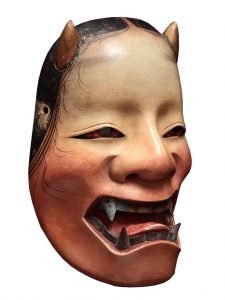
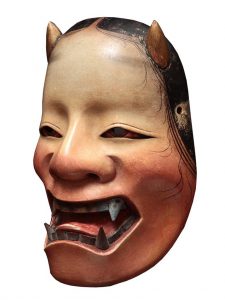
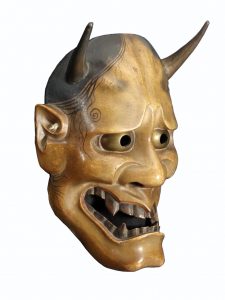
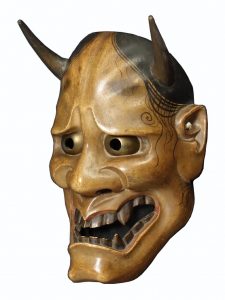
Of course we are in a theater, or rather on the stage of a Noh theater tragedy in which everything is extreme in order to force the spectator’s emotions. But who hasn’t experienced once in his life -for any reason, even as a homeopathic remedy- such dangerously all-absorbing feelings? Noh theater bares the human soul, rips it open in the tragedy of feelings that were already nestling in our unconscious when we had not even reached the stage of homo sapiens.
Are these the reasons why I feel attracted by this mask? Certainly not, it would be perverse to indulge in such devastating feelings!
My fascination for the Namanari mask, the one shown in photo 1, rests on two parallel levels, one aesthetic and one psychological.
Only an extremely gifted sculptor can succeed in showing on the same face two such seemingly irreconcilable expressions: the realism of the human and the appearance of the demonic, as if doctor Jekyll looked at himself in the mirror and saw his face morphing into that of Mr. Hyde. The result in this mask is perfect, well-balanced, because not only does it allow the two dimensions to coexist, but they even seem to be enhanced. While I am well aware of the huge difference in quality and of the different artistic traditions, the Namanari mask reminds me –mutatis mutandis– of Caravaggio’s portrait of Medusa (photo 4): the mouths wide open in a muted howl, the deep furrows creasing the brows, the eyes reflecting the terror of death.
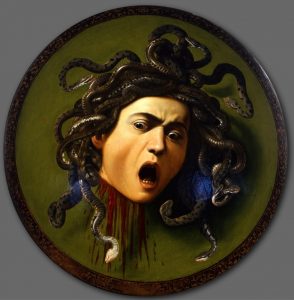
The second reason for my attraction is loosely connected with the psychological and spiritual implications of Noh theater, with its power to spur the spectator into identifying with the character in the drama. Namanari is human nature’s ambivalence and the more the spectator recognizes it in himself turning “the show” into a reflection of his soul, the more he will succeed in cleansing himself of it. If this happens even for just a moment, then the objective of Noh theater is achieved


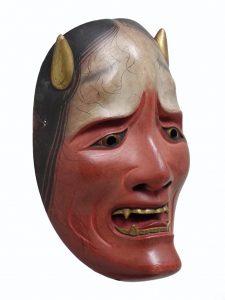
No Comments